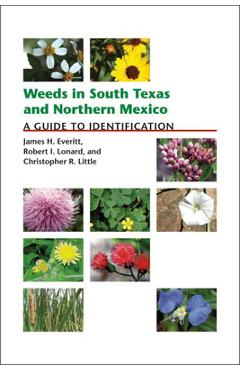Weeds in South Texas and Northern Mexico: A Guide to Identification - James H. Everitt

Detalii Weeds in South Texas and
libris.ro
201.5 Lei
Technology & Engineering
James H. Everitt
Weeds in South Texas and - Disponibil la libris.ro
Pe YEO găsești Weeds in South Texas and de la James H. Everitt, în categoria Technology & Engineering.
Indiferent de nevoile tale, Weeds in South Texas and Northern Mexico: A Guide to Identification - James H. Everitt din categoria Technology & Engineering îți poate aduce un echilibru perfect între calitate și preț, cu avantaje practice și moderne.
Preț: 201.5 Lei
Caracteristicile produsului Weeds in South Texas and
- Brand: James H. Everitt
- Categoria: Technology & Engineering
- Magazin: libris.ro
- Ultima actualizare: 11-04-2024 01:14:23
Comandă Weeds in South Texas and Online, Simplu și Rapid
Prin intermediul platformei YEO, poți comanda Weeds in South Texas and de la libris.ro rapid și în siguranță. Bucură-te de o experiență de cumpărături online optimizată și descoperă cele mai bune oferte actualizate constant.
Descriere magazin:
One person\'s weed is another\'s wildflower, but in this book weeds of southern Texas and northern Mexico are defined as plants that are considered a nuisance to farmers or noxious to livestock in the region. The book covers 189 broad-leaved herbaceous species, grasslike plants, and grasses, encompassing 144 genera and 45 families. These include one species of fern, 142 species of dicots, and 46 species of monocots. Of the dicots, 111 species of dicots are native and 31 are introduced. Twenty-one species of monocots are native, and 25 are introduced. The species descriptions include color photographs, family names, common names, scientific names, general descriptions, and the ecological characteristics of the weeds. Voucher specimens for most of the plants are on file in the University of Texas-Pan American Herbarium. Although this book focuses on plants that occur on both sides of the Rio Grande in Texas and northern Mexico, the extensive ranges of many of the represented species make it a useful reference for weeds in other areas of Texas and the southwestern United States. This book will be useful to farmers and farm managers, agricultural consultants, ranchers, natural resource managers, scientists, and anyone interested in the flora of southern Texas and northern Mexico.

Produse asemănătoare
Produse marca James H. Everitt

Grasses of South Texas: A Guide to Identification and Value - James H. Everitt
![]() libris.ro
libris.ro
Actualizat in 18/03/2025
278.72 Lei

Weeds in South Texas and Northern Mexico: A Guide to Identification - James H. Everitt
![]() libris.ro
libris.ro
Actualizat in 11/04/2024
201.5 Lei